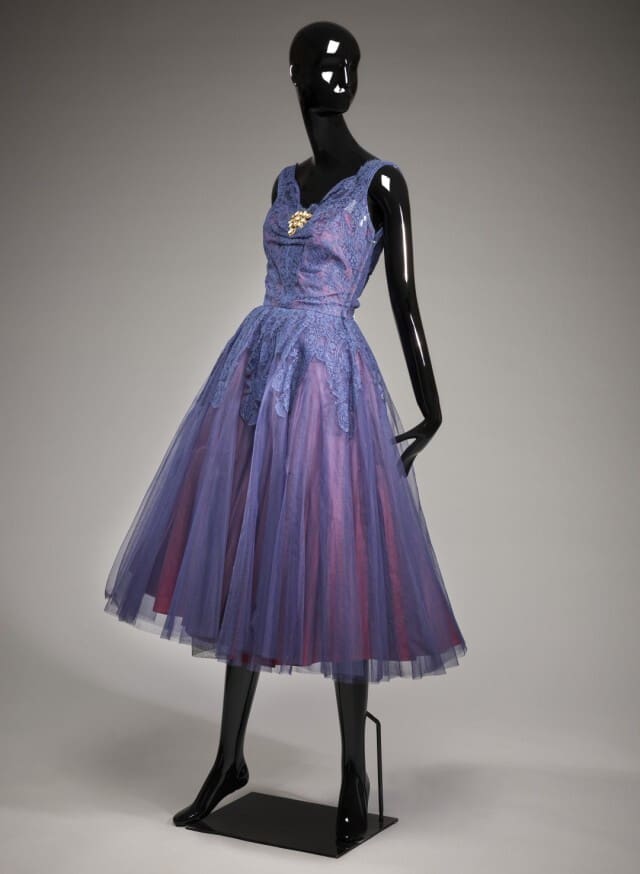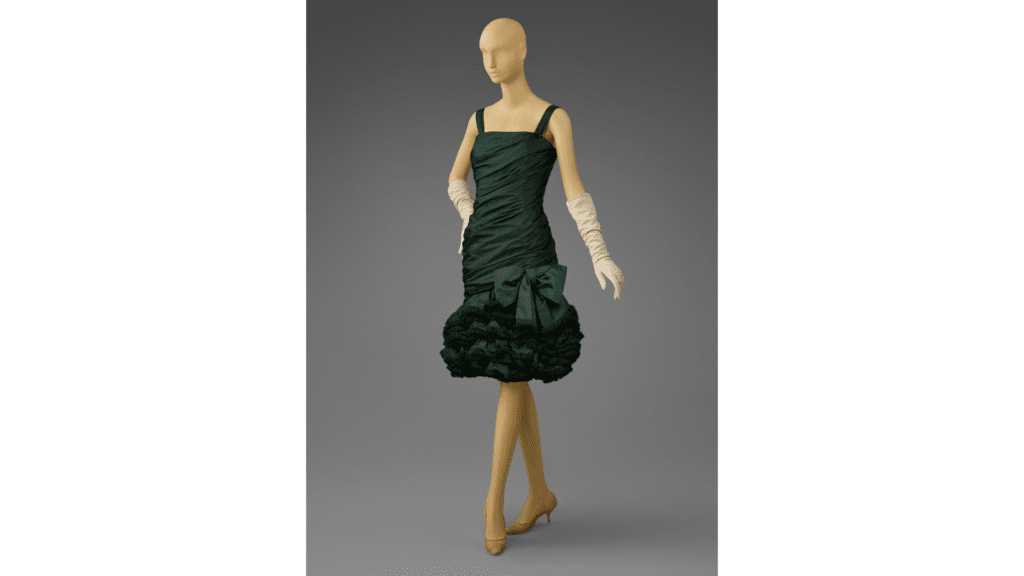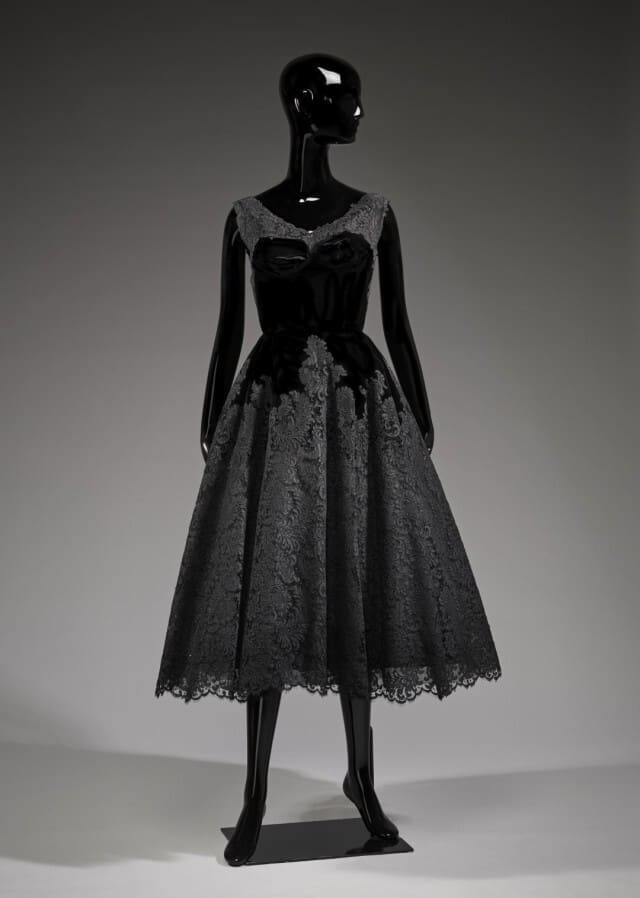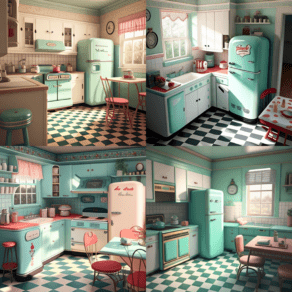Elegant and feminine: The defining style of 1950s cocktail dresses

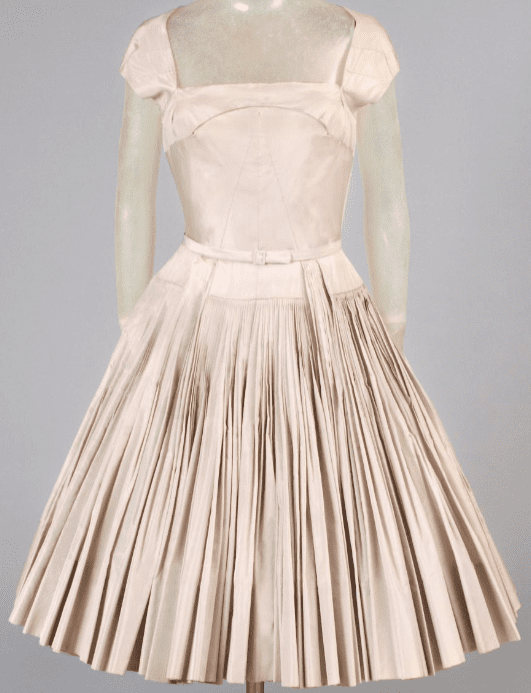
1955: Designed by James Galanos (American, 1924–2016)
The 1950s cocktail dresses were distinctly more refined and feminine than those of the previous decade. They were typically knee-length or slightly longer and made from expensive materials like silk, satin, or taffeta.
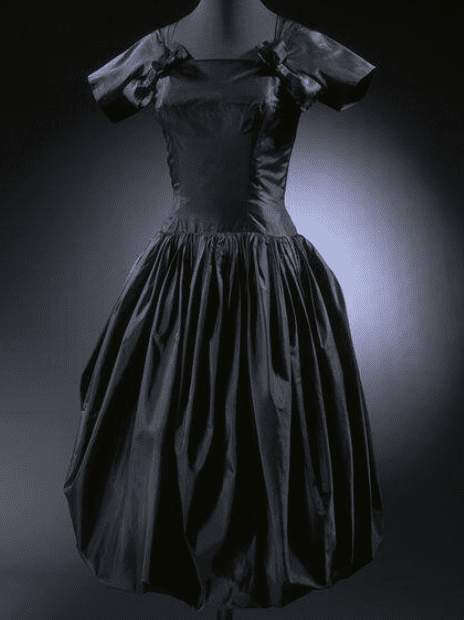
In the 1950s, designers were constantly on the lookout for fresh silhouettes. They tried out some different styles of balloon skirts. It was challenging to achieve and keep these rounded shapes. Sitting down could cause a woman’s skirt to lose its fullness, but since most people at cocktail parties prefer to stand, this problem is rarely encountered. Madame Grès gathered the fine silk taffeta into a dropped waist to create this cocktail dress. She sewed the taffeta’s hem onto a matching, straight, and narrow petticoat. The top is form fitting and has a long, sleeveless neckline and bodice. It’s a nice contrast to the skirt’s curvy shapes. The top has a support structure and a lining made of silk organza. In order to shape and support the gathers, the organza continues to a roll inside. The square, low neckline is accented with two tailored bows. The back of the dress zips up.
Cocktail dress of silk taffeta lined with silk organza, Madame Grès, Paris, ca. 1950
Christian Dior, Balenciaga, and Givenchy were three of the era’s most acclaimed fashion houses. Pastels like pink and blue, as well as darker hues like black and red, were popular. Dresses typically had nipped-in bodices and flared skirts, with a smattering of adornments ranging from bows and beads to sequins.
In the United States of America, in the 1950s, a cocktail dress could be purchased from high-end department stores like Neiman Marcus or Saks Fifth Avenue, or from specialised boutiques like Bergdorf Goodman. If you were looking for a cocktail dress in the 1950s in the United Kingdom, I recommend visiting Harrods or Selfridges.
The A-line, the full skirt, and the fitted bodice were the most popular silhouettes for cocktail dresses in the ’50s. The A-line silhouette was characterised by a close-fitting bodice and a gradually widening skirt from the hips down to the hem. The full, voluminous skirt was frequently created with gathers or pleats. To emphasise your waist and bust, choose a fitted bodice, which is exactly what it sounds like.
The scalloped panels of this bodice front, created by overlapping, curved pleats, look like a stylized rendition of ebbing waves, an impression heightened by the deep sea blue of the fine, slightly stiff silk fabric. Using deft pleating, fabric cut on the bias, and a seamless front, the curved, fitted bodice is given the appearance of floating freedom of movement.
The low, strapless décolletage in front is enclosed by the scalloped pleating, which then continues across the back in straight, horizontal lines. The waistline is drawn in closely, and from there the skirt flares out in long, gentle pleats.
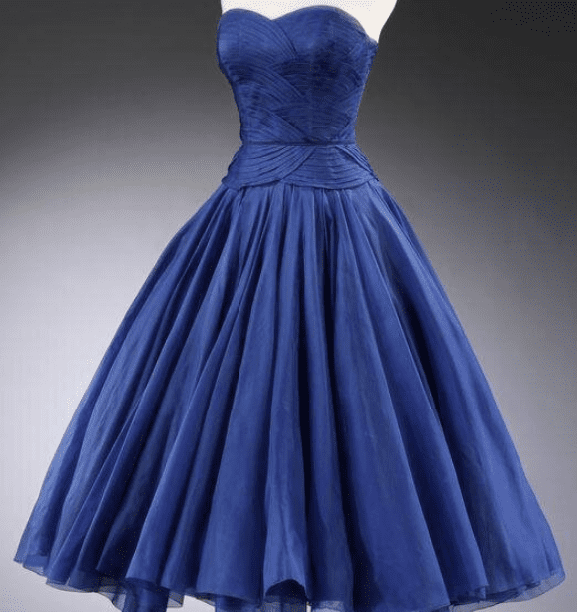
Cocktail dress of silk and jacket of silk organza, designed by Jean Dessès, Paris, 1951. Worn by HRH Princess Margaret.
Semi-formal evening events like parties, receptions, and other social gatherings were perfect opportunities to break out a cocktail dress and feel like a true 1950s fashion icon. They were also common at formal events like proms and weddings. A cocktail dress was also common attire for the cocktail hour that preceded dinner. Dresses like these were acceptable to wear to events that called for something fancier than everyday clothes but less formal than an evening gown.
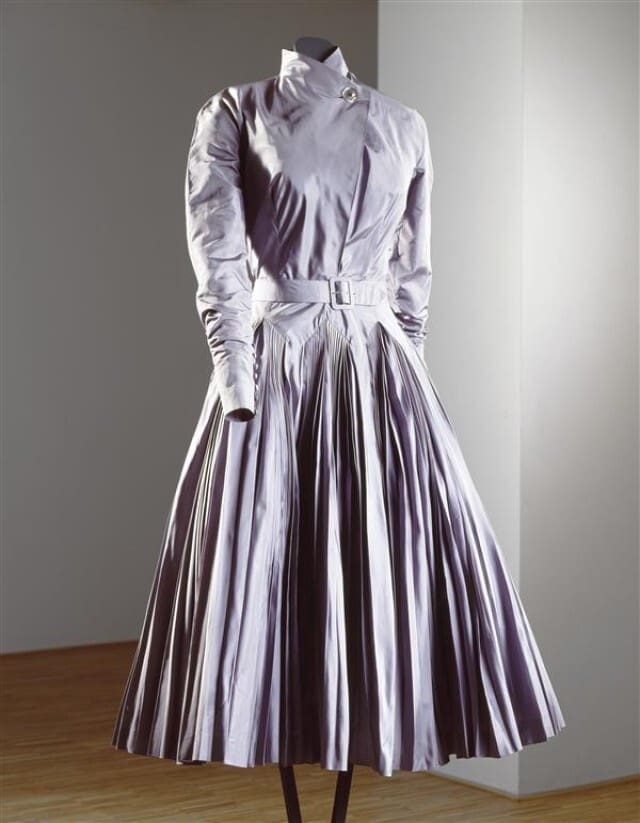
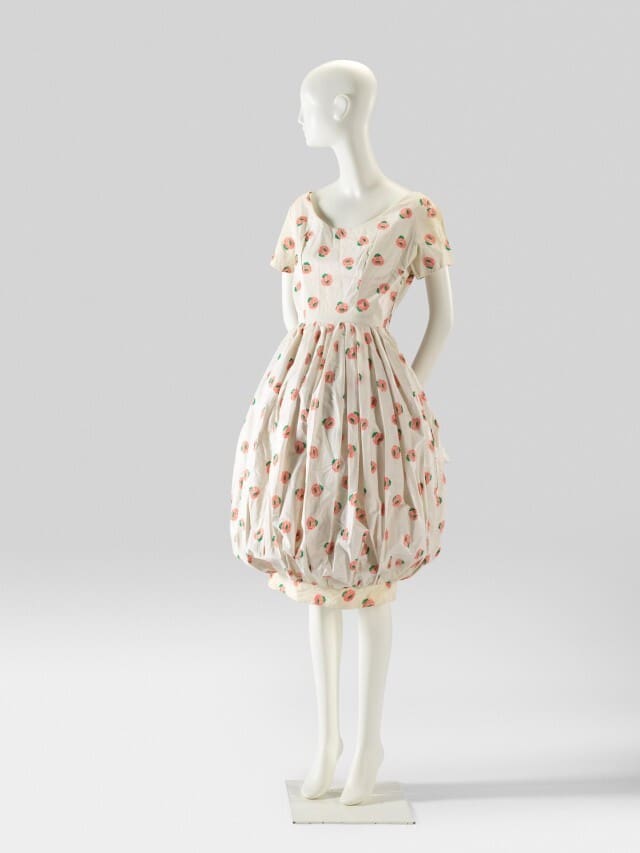
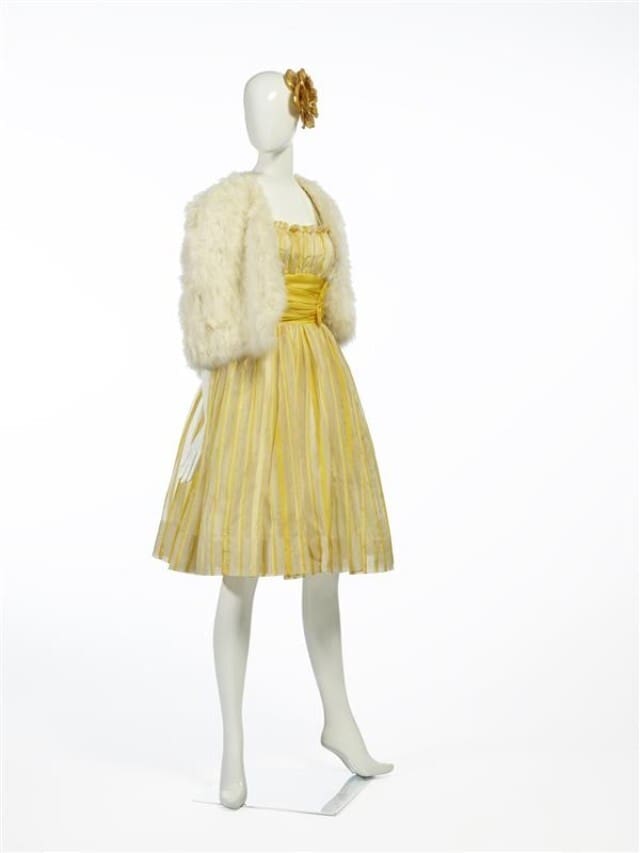
Coco Chanel’s “little black dress” is arguably the most recognisable and celebrated cocktail dress of the 1950s. This dress had a knee-length skirt and a fitted bodice, making it both simple and elegant. It was typically paired with flat black pumps and pearl jewellery and was constructed from a substantial crepe fabric. It was widely held that the “little black dress” was one of the most classic and adaptable pieces of clothing because it could be worn anywhere, from the office to a formal event. It was an essential part of any woman’s wardrobe, and that notion persists today. Because it was so simple and elegant, the “little black dress” by Chanel was able to appeal to a wide variety of women despite breaking from the era’s norm of bright colours and elaborate decorations.
The “little black dress” by Coco Chanel was introduced with her collection, so it’s likely that several models and customers wore it before it became famous. Yet, Coco Chanel is credited with wearing the style early on and helping to make it a fashion must-have.
People of all ages, socioeconomic backgrounds, and body types sported the style because of its timeless elegance and adaptability. As time went on, it became a staple in the wardrobes of many famous women, including Audrey Hepburn, Marilyn Monroe, and Jacqueline Kennedy, and came to be seen as a symbol of sophistication.
Mixing the old with the new: Incorporating vintage 1950s cocktail dresses into modern style
An updated take on a retro cocktail dress can be achieved by adding modern touches like a statement belt, earrings, or shoes. The result can be a one-of-a-kind and fashionable hybrid of retro and contemporary styles.
Modifying a vintage cocktail dress to your measurements can give it a more current vibe. Modernize it by cutting it shorter or longer, adding sleeves, or switching up the neckline.
Mix things up by layering a modern cardigan, denim jacket, or blazer over a vintage cocktail dress.
Find vintage cocktail dresses with clean silhouettes and unfussy details; these can be updated with just a few key pieces of jewellery.
Add a touch of the past to your look by incorporating vintage accessories like a scarf, hat, or gloves.
If you wear a vintage cocktail dress in a colour that is currently on-trend and pair it with up-to-date accessories, you can give the dress a whole new feel.
Try out various hair, makeup, and accessory combinations with your vintage dress to find the one that best complements your figure.
Incorporating retro details into modern decor can be an exciting and inventive process; it’s all about trying out new things until you find what you like.
1950s Christian Dior Cocktail Dresses
